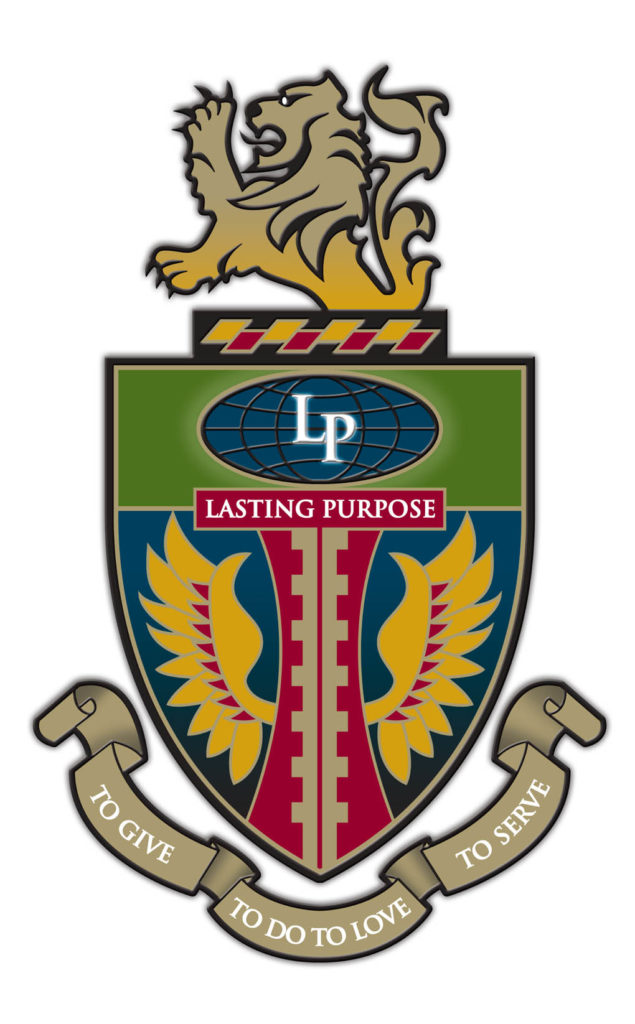Doctor of Chiropractic 2023
DOCTOR of CHIROPRACTIC

CHIROPRACTIC PROGRAM
OVERVIEW
What sets Life University’s Doctor of Chiropractic degree apart from other chiropractic colleges? That’s easy! Life U’s 14-quarter (approximately four-year) program combines basic and chiropractic sciences with a vitalistic philosophy and real-world clinical applications that give its students the most comprehensive chiropractic education in the world. Our technological resources at Life U (PAT Lab, Virtual Anatomy Lab, LearningSpace Technology, etc.) are second to none, equipping Life U’s students with the tools necessary for entering the profession with the confidence needed to serve and care for their future patients.
With a faculty and staff that puts students’ needs first, Life U’s Doctor of Chiropractic program isn’t just a machine generating cookie-cutter chiropractors. It’s full of caring people who see our students as part of a new future in health care, one in which symptoms and diseases are not at the forefront, but rather one where holistic health, well-being and optimal function are consistently emphasized and improved upon.
WHAT STUDENTS SAY
“I came here with an idea of what Chiropractic was, and I’ve learned that it is so much more than that. I thought of Chiropractic as a way to serve my community, but I see now that you can not only serve your community, but also create a really big and impactful change.”
CHIROPRACTIC EDUCATION
DETAILS
At its core, Chiropractic is a philosophy of health, a science of the nervous system and spine, and an art of helping people regain their health naturally. The Mission of Life U’s College of Chiropractic is to educate, mentor and graduate contemporary and compassionate Doctors of Chiropractic, based on a model of Vertebral Subluxation.
What You’ll Learn
Assessments and diagnoses require developed clinical reasoning skills. Clinical reasoning consists of data gathering and interpretation, hypothesis generation and testing, and critical evaluation of diagnostic strategies.
#2 – Management Plans
Management plans involve the development, implementation and documentation of a patient care plan for positively impacting a patient’s health and well-being, including specific healthcare goals and prognoses. It may include case follow-up, referral and/or collaborative care.
#3 – Health Promotion and Disease Prevention
Health promotion and disease prevention require an understanding and application of epidemiological principles regarding the nature and identification of health issues in diverse populations and recognition of the impact of biological, chemical, behavioral, structural, psychosocial and environmental factors on general health.
#4 – Communication and Record Keeping
Effective communication includes oral, written and nonverbal skills with appropriate sensitivity, clarity and control for a wide range of healthcare-related activities, including patient care, professional communication, health education, and record keeping and reporting.
#5 – Professional Ethics and Jurisprudence
Professionals are expected to comply with the law and exhibit ethical behavior at all times.
#6 – Information and Technology Literacy
Information literacy is a set of abilities, including the use of technology, to locate, evaluate and integrate research and other types of evidence to manage patient care.
#7 – Chiropractic Adjustments
Doctors of chiropractic employ adjustments to address joint and neurophysiologic dysfunction. The adjustment is a precise procedure requiring the discrimination and identification of dysfunction; interpretation and application of clinical knowledge; and the use of cognitive and psychomotor skills.
#8 – Inter-Professional Education
Students have the knowledge, skills and values necessary to function as part of an inter-professional team to provide patient-centered, collaborative care.
#9 – Philosophy of Chiropractic
Life University has always embraced the philosophy of Vitalism. This philosophy recognizes that the Universe is self-conscious, and as such, creates itself as a dynamic system wherein living organisms are self-developing, self-maintaining and self-healing.
#10 – Service
Life University has always maintained a value of service through its foundational value of Lasting Purpose: To live an inner-directed life, to give, to do, to love, to serve, out of your own abundance.
Program Design
Students begin their chiropractic studies learning the foundational aspects upon which the profession is built – the history, philosophy and science of Chiropractic. As they progress past the first two quarters, students study the basic sciences, while also beginning to learn about chiropractic analysis, techniques and examinations. Once students reach the Eighth Quarter of the program, they enter the clinical phase of their studies and apply their lessons to real-world situations. Students nearing graduation take practice management courses and clinical application, working in outpatient settings.
Career Opportunities
Many chiropractors operate family practices where they provide preventive care, as well as care for a wide variety of injuries and conditions, whether physical or neurological. The doctor often cares for multiple family members from the same household and builds a strong rapport with their community.
Women and Pediatric Chiropractic
Women experience unique healthcare events, and their physical, neurological and emotional health may worsen during pregnancy. The body endures a great deal of stress during pregnancy, and to find relief, pregnant mothers often seek chiropractic care. Post-partum care may include chiropractic adjustments for both the mother and the infant, leading some chiropractors to specialize exclusively in treatment for women and in the pediatric domain.
Integrated Practice
With the growing level of professional respect between chiropractors and medical doctors, now more than ever there is a collaboration between practitioners in different disciplines. Some chiropractors have hospital-based practices where they offer care in conjunction with medical doctors and specialists in a variety of fields. Others work in more holistic environments along with like-minded practitioners specializing in massage therapy, acupuncture, nutrition and more.
Sports Chiropractic
A career in Sports Chiropractic is also a popular option in the profession. Many who pursue a Doctor of Chiropractic degree had prior experience as an athlete growing up, and it may have been care they received from a chiropractor while competing in their sport that spurred them on to wanting to be a chiropractor. Chiropractors are associated with the sporting culture now more than ever. All NFL, MLB, MLS and Olympic teams have chiropractic services available for their athletes.
Chiropractic Research & Faculty
The chiropractic research field is an emerging field and a viable option for chiropractic alumni to pursue after graduation. Many of the top chiropractic colleges and universities in the world, including Life University, employ staff in their research departments whose primary roles are to conduct studies that advance the profession forward through research that further validates Chiropractic’s place as a leader in the healthcare field. Also, many research staff members also teach chiropractic courses as faculty at these institutions or work with student interns during the clinical phase of their education.
Chiropractic Radiologist
Chiropractic radiology is a specialized branch of chiropractic health care that consists of interpreting, and sometimes performing, imaging exams, such as plain radiographs, MRI, CT and diagnostic ultrasound. Most specialties in the chiropractic field require additional training in the form of postgraduate seminars or full-time residencies—as is required with chiropractic radiology—and then board certification examinations to earn diplomate status.
Clinical Experience: Entry, Development, Mastery
Entry Into Clinic System (Level I)
Life U’s Level I Clinic experience encompasses students’ 8th and 9th quarters in the Doctor of Chiropractic program. Instruction takes place at the Campus Center for Health and Optimum Performance (CC-HOP). This is where clinical competencies are developed with close faculty supervision. This also is where students are introduced to the innovative Palpation Adjustment Trainer (PAT), an anatomically accurate, technology-based mannequin with the look, feel, size and weight of an average person. The mannequin features a 3D-printed or molded spine, pelvis and occiput surrounded by viscoelastic skin and soft tissue, simulating the actual experience of adjusting a human patient (learn more about PAT). mounts of force and speed, along a specific vector.
Development of Clinical Skills (Level II)
Life U’s Level II Clinic experience encompasses students’ 10th,11th and 12th quarters in the Doctor of Chiropractic program. Instruction takes place in the Center for Health and Optimum Performance (C-HOP), located near the Cobb Parkway entrance to Life U. Level II is where students will continue to develop clinical competency and critical thinking skills. Students will begin caring for a variety of patients with a wider range of conditions. In this setting, students will be mentored by faculty with significant patient management expertise. The Level II clinic includes a variety of specialties (i.e., radiology, orthopedics, rehabilitation, pediatrics, nutrition and sports, functional kinesiology, functional neurology, etc.).
Mastery of Clinical Skills (Level III or PEAK)
Level III Clinic is referred to as P.E.A.K., which stands for Practice, Excellence, Art and Knowledge. This encompasses the students’ final quarters (13th and 14th). Meaningful clinical opportunities may be experienced in one of over 800 affiliated offices around the world, including:
- 42 states
- International clinics (China, Ghana, Sweden, The Netherlands, Singapore, or British Columbia)
- In the office of a credentialed Life University extension faculty member.
- Military patient care through Veterans Administration (VA) and Department of Defense (DOD)
There are a wide variety of practice styles, such as: Sports, Pediatrics, Personal Injury, Insurance-based or cash-based, Geriatrics, Nutrition, Functional Neurology, as well as a wide variety of chiropractic techniques. Level III is where the student will begin integration into a broader healthcare environment and be exposed to an increased range, variety and complexity of cases. Patient management must reflect a heightened skill in clinical time management without compromising care standards or the patient’s sense of receiving excellent care. In addition, this experience will allow for direct interaction with the business aspects of running a daily practice. Chiropractic school requirements for graduation will be completed during this final level of clinical education.
University Chiropractic Resources
CHIROPRACTIC CAREER
STATS & FACTS
- According to the Salary.com, the median average salary for chiropractors in Atlanta, Georgia is $153,100.
- The Bureau of Labor Statistics projects the employment of chiropractors to grow 11% from 2020 to 2030, faster than the average for all occupations.
- NursingProcess.org ranks Life University the number one rated Chiropractic program in the country.
WHAT STUDENTS SAY
“I decided on Chiropractic because when I look back at how it truly benefited me personally, I would love for everybody else to experience it. Life University’s philosophy is all about genuine love and positive energy; having passion for what you do and for the people you’re helping; and committing to live a better life to make the world a better place.”
